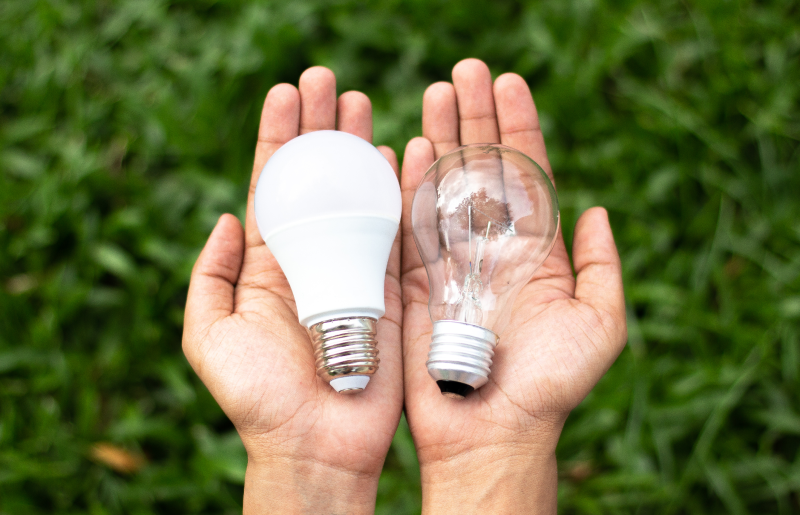Solar energy is a practical and clean solution to your energy needs, but going through the solutions may become confusing. To choose the right solution, you need to understand what you are looking at. The solar industry has a lot of options, accessories, and pricing structures, resulting in multiple solutions. The diversity in options is good for you; it means there’s a solution no matter your circumstances.
Why compare solar solution proposals?
When evaluating a solar solution that’s right for your business, you will need to understand from the get-go what you’re looking for. Do you want to own the solar system and have the cash to do so, or would a financed solution be more suitable for your business’ needs? Let’s review the main differences you’ll need to consider:
An all-cash purchase
With this option you are essentially purchasing electricity for the next few decades in advance. However, it requires a large upfront investment and, often, maintenance and upkeep would be the responsibility of your business. As a business owner, a key question to ask yourself would be, who in my business is going to take accountability for the system and manage the ongoing maintenance and monitoring that’s required?
A power purchase agreement (PPA) or lease agreement
Is a third-party-owned system where the installer owns and maintains the solar solution. With a PPA you pay for the electricity based on a solar tariff that is cheaper than what you’re currently paying whereas with a lease agreement you pay for the system based on a fixed monthly fee. In either scenario, your business doesn’t need to have money upfront, you only pay for what you use or the monthly payment.
Making a final decision
Making a final decision may be a time consuming process as there are so many facets to consider, however, the biggest question that should be top of mind is what is it going to cost me in the long run if I don’t make a decision at all?
What are the top 5 things I should look at when comparing solar cash purchase proposals (excluding battery storage)?
With an all-cash purchase, you’re paying for the solar system as quickly as possible, so your rate of return is an important factor. Coupled with the importance of Return on Investment (ROI) is the solar yield that needs to be taken into consideration along with the consumption as it doesn’t help if the solar system is producing energy that you won’t end up using. When comparing cash purchase options, be sure to look at the following:
- The proposed system size.
- Rand per Wp cost which is the total cost / system size.
- ROI or internal rate of return.
- Solar yield vs consumption – what will the system produce versus what the business will consume?
- Payback period – in how many years will the panels pay for themselves?
When it comes to owning a solar system, it’s critical to understand the potential risks and unforeseen costs that could occur over the coming years.
What are the top 5 things I should look at when comparing solar finance proposals (grid-tied)?
Whilst the solar PV tariff will be the main figure driving the price, the most important factor to look at is the solar yield compared to the consumption, most of the time a bigger solar system is not better because you won’t end up using the power that is being produced so it will just go to waste. Therefore, it is important that your solar system is sized based on how much energy your business consumes and not how much energy the system can produce.
Another key factor driving the solar tariff is whether your proposal has been structured as a ‘No take, No Pay’ or ‘Take, or Pay’ deal. ‘No take, No Pay’ means that you will only pay for the energy you use. When a proposal has been structured on a ‘Take or Pay’, the solar system has been sized based on how much energy the system produces and the number of ‘non-operational’ business days such as weekends and annual December shut down periods are not taken into consideration which means you will end up not using all the energy the system has produced, resulting in lower savings and money in your pocket. When comparing solar financing options, be sure to look at the following:
- Solar yield vs consumption – what will the system produce versus what I will consume?
- Agreement term – has a buyout been included, from what year will you own the system?
- No Take or Pay – if you are paying for electricity based on what the system produces your solar tariff may be cheaper and your system size may be bigger too however, you won’t end up using all the power the system has produced and it will be wasted. Your potential savings will not be realised.
- Annual escalation rate – take note of the assumed escalation rate for the current price of electricity as well as the solar PV tariff escalation rate over the full agreement term.
- Operational days – has your solar system been sized based on the amount of days your business operates for? Is your business a 4-day or 7-day power user?
Last few tips to look out for?
- Has the proposed lifetime savings been based on the same number of years as the agreement term?
- Has access to your roof been included? For example, cat ladders can cost around R10 000 per metre if getting to your roof is tricky.
- Has lightning protection been factored in? Anything over 100kWp in Gauteng needs to have lightning protection included by law. The lightning assessment is separate to the actual cost. The assessment can cost around R5 000 whereas the actual cost is much higher and between R40k – R100k.
- If there is a significant difference between the two tariffs you’re comparing – then there may be a problem. You will need to investigate why there is such a major difference. What is driving the extreme low or high solar tariff? Is it the agreement term or the solar / consumption yield?
What your solar partner will consider when sizing your system
As your solar partner takes a deeper look into your business to determine the best solar energy solution, the following constraints will be considered:
- Building a solar system that will fit into your budget.
- The space constraints at your premises – available roof space versus ground space.
- Future expansion of your business.
- Accurate weather data over a long period of time i.e. 10 years for your region.
- Panel orientation or tilt and shading from any surrounding buildings or trees.
- Solar panel ratings and the type of equipment (tier 1 or other).
- Roof structure – what is the integrity of your roof, are roof repairs required?
There are many factors to be considered when opting for a solar system for your business and not all businesses have, or need, an expert on solar solutions. To offer the most effective solar solution for your business, your solar partner must immerse themselves in the day-to-day runnings of your operation and gain as much information upfront as possible.
Can I expect surprise costs after signing on the dotted line?
The short answer is yes. This isn’t a sinister ploy by the provider or industry; it’s due to the number of factors that lead to costs rising or falling. The costs can vary due to material supplies, the complexity of mounting the solar system, financing options available and a range of other factors. If a service provider has quoted without conducting an extensive and detailed site inspection, you may likely incur additional costs.
Does your solar partner provide maintenance services?
Solar equipment is robust and durable, however it does require skilled monitoring and maintenance to ensure that the system is operating optimally to provide the forecasted financial returns. Prior to the commercial operations date or project handover, SolarAfrica develops a detailed project specific maintenance plan. The maintenance plan contains guidelines for the following:
- Scheduled Maintenance
- Condition Based Maintenance
- Predictive Maintenance
- Reporting
- Reaction times
- System monitoring
- SHEQ requirements
The items listed are carefully tracked on a daily and weekly basis via lagging and leading key performance indicators (KPI’s), which allows the Operations and Maintenance (O&M) team to react fast when sites are underperforming.
Preventive maintenance is critical; without it, your solar equipment will not perform optimally, it will degrade, and you could risk losing your warranty if you omit scheduled maintenance activities. Furthermore, if scheduled washing is not carried out, system losses can be as high as 20% of expected power output. A key performance indicator to track whether scheduled maintenance is done on time is Percentage Schedule Compliance. It looks at the amount of maintenance activities on a ‘planned vs completed’ basis.
How often does your solar energy equipment need maintenance? Well, that depends on your site. SolarAfrica typically performs scheduled maintenance checks twice a year on the equipment it manages, as recommended by the OEMs. But there are situations in which you may need more regular maintenance, for example:
- The site is located in a dusty or dirty area, which leads to a high level of soiling on the solar panels, reducing your energy production.
- A milling company or detergent factory where the grains or chemicals frequently settle on areas such as the roof or ground.
In those cases, the solar equipment will need maintenance more regularly, and the maintenance strategy for those sites will be updated accordingly.
Condition-based maintenance is performed when predictive maintenance efforts reveal that the system requires additional checks or repairs because it isn’t performing as expected. It refers to those ad hoc maintenance events that were not planned, like a tree falling on the panels, damaged wiring, or lightning strikes. Such incidents can be costly. SolarAfrica has comprehensive machinary breakdown insurance to cover these unplanned events. Under a PPA agreement, maintenance management and costs associated will be borne by SolarAfrica.
Is it better to maintain the solar energy system yourself?
Many businesses attempt to manage the maintenance on their solar system in-house. As those clients believe that it’s a simpler and more cost-effective solution. Sadly this is not always true, and it is at times the primary reason why solar energy systems perform below par after a few years of operation. In the absence of in-house experts and prudent maintenance personnel, your solar equipment will deteriorate, and your solar installation will not yield the intended returns and or savings.
If you want your business to make savings and have a solar energy system continuously operating at optimum levels, you need a PPA from SolarAfrica. Under the agreement, you only pay for the solar energy that you consume at a discounted rate. SolarAfrica will carry out maintenance at its expense and to your benefit. Business decisions are only as good as the information they are based on. You should partner with a solar solutions provider with the expertise, history and equipment to give you the right solution.
Get in touch with our team of solar experts if your business is considering solar energy and needs advice to help you select the right solution for your needs.
Planning your organisation’s green energy road map is easier than it seems. Fill in our green energy goals questionnaire to identify the right alternative energy solution for your business.






